Abstract
Lazaroff, Norman (British Columbia Research Council, Vancouver, B.C., Canada). Sulfate requirement for iron oxidation by Thiobacillus ferrooxidans. J. Bacteriol. 85:78–83. 1963.—The growth of Thiobacillus ferrooxidans is initially inhibited in media containing ferrous chloride in place of ferrous sulfate. This inhibition of growth is due to the requirement of a high relative proportion of sulfate ions to chloride (or other anions) for iron oxidation. Adaptation takes place, producing strains which are able to oxidize iron in media containing an initially unfavorable anionic composition. Adaptation is possibly due to the selection of spontaneous mutants capable of oxidizing iron in high chloride, low sulfate media. Such cells are found at a frequency of 10−5 of the population of unadapted cultures.
Full text
PDF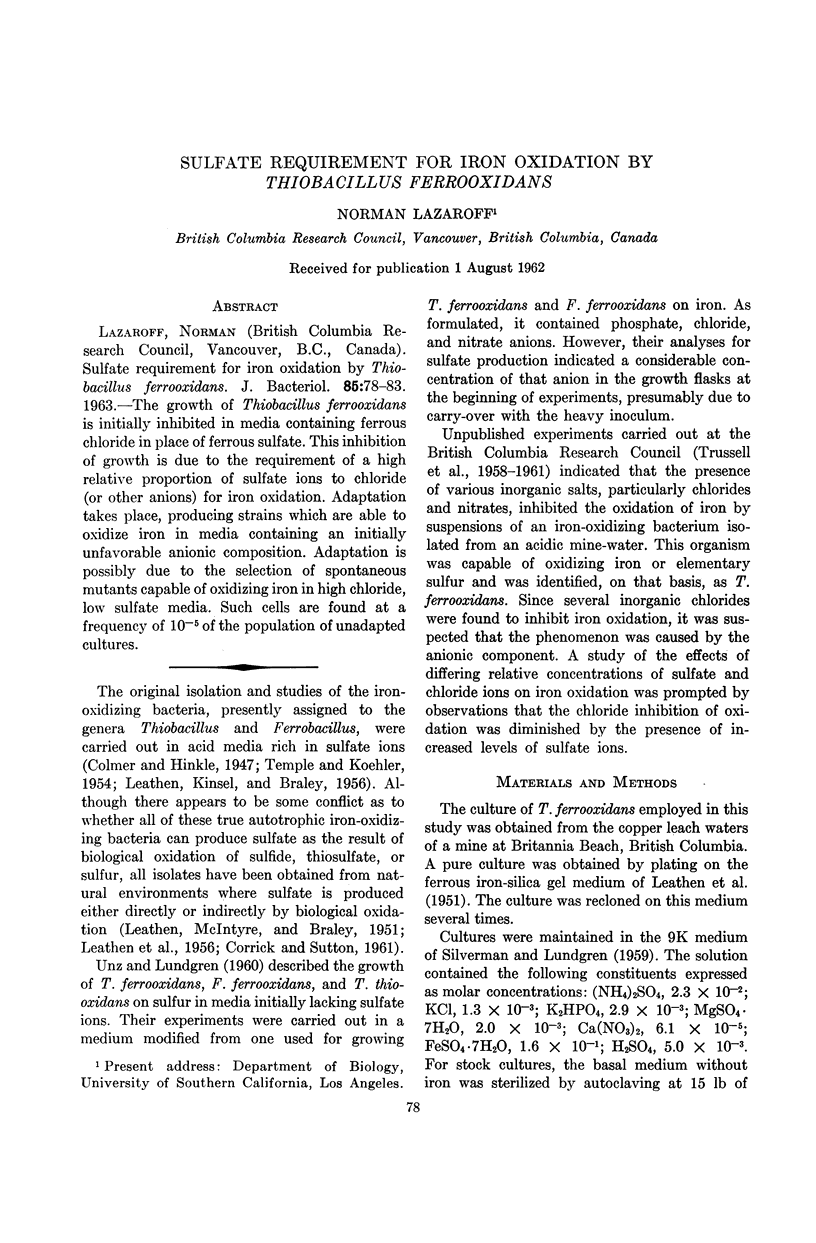
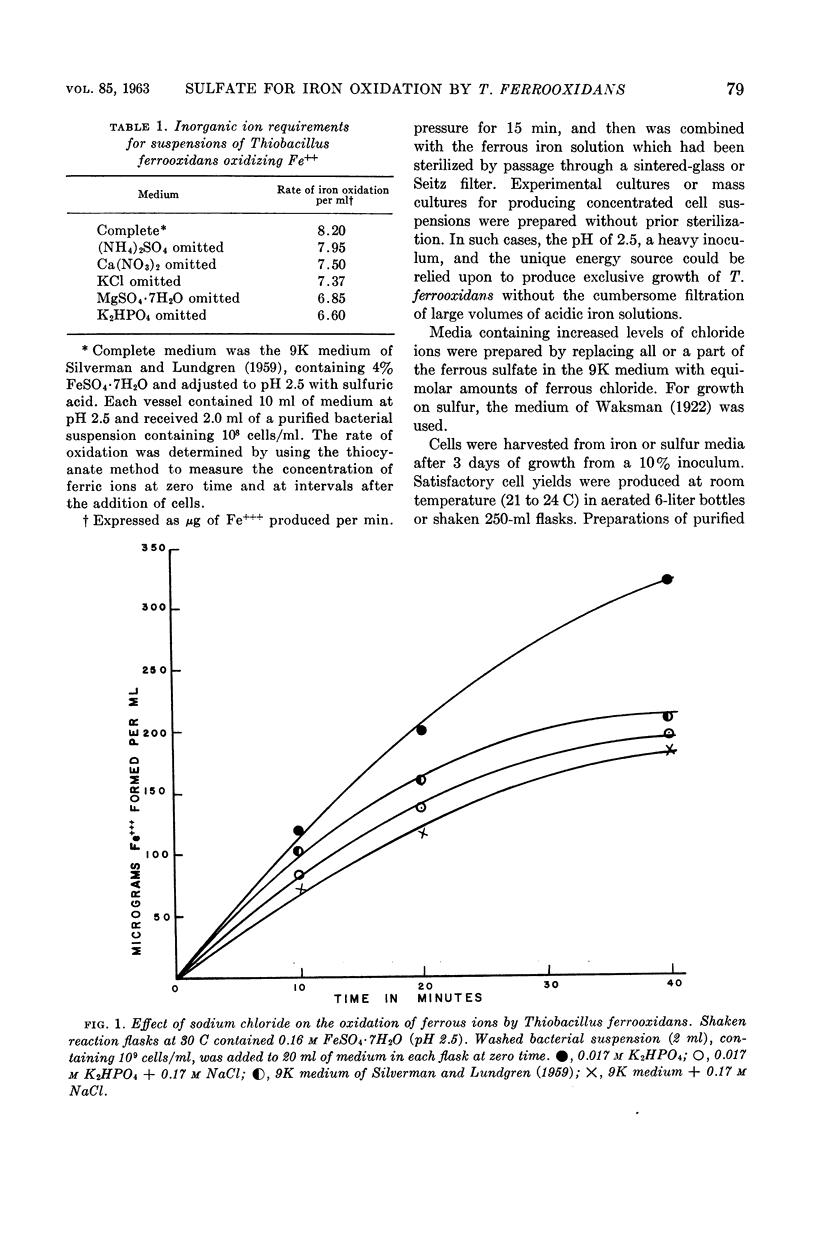
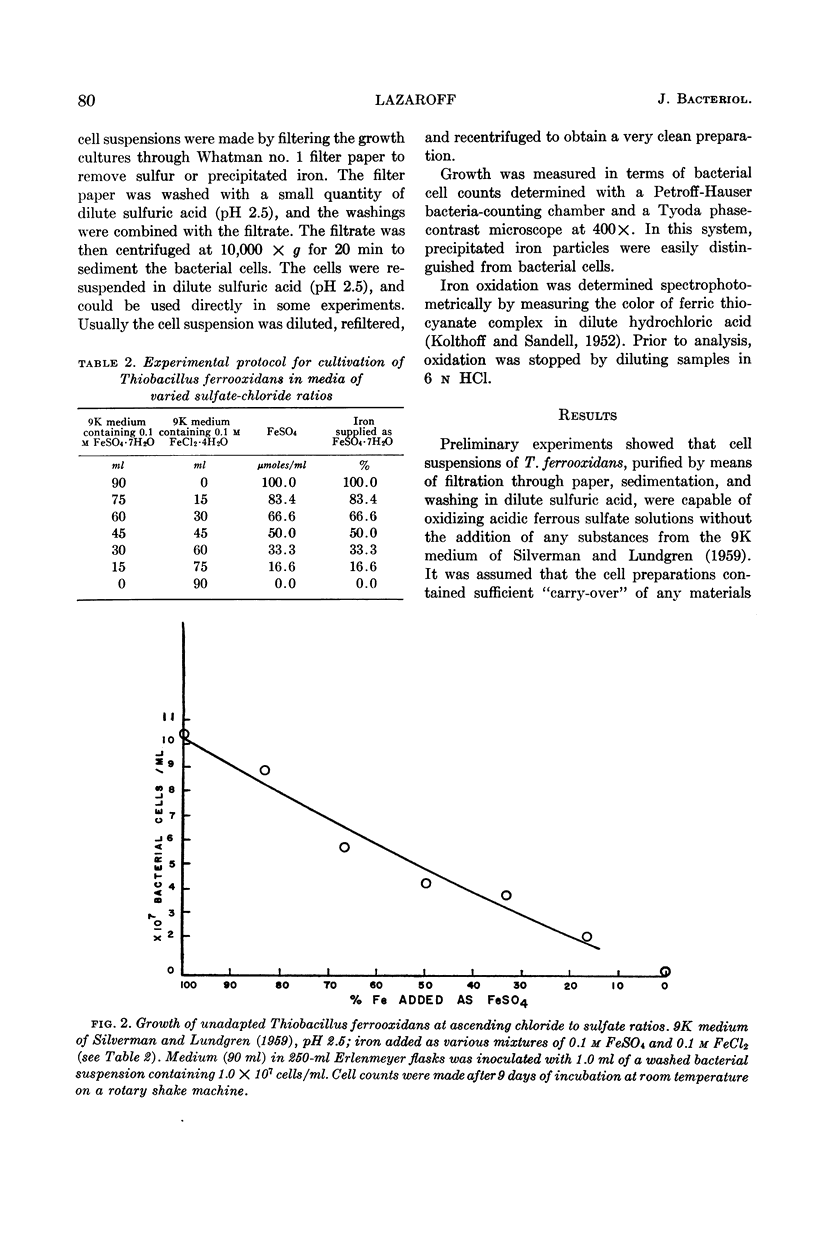
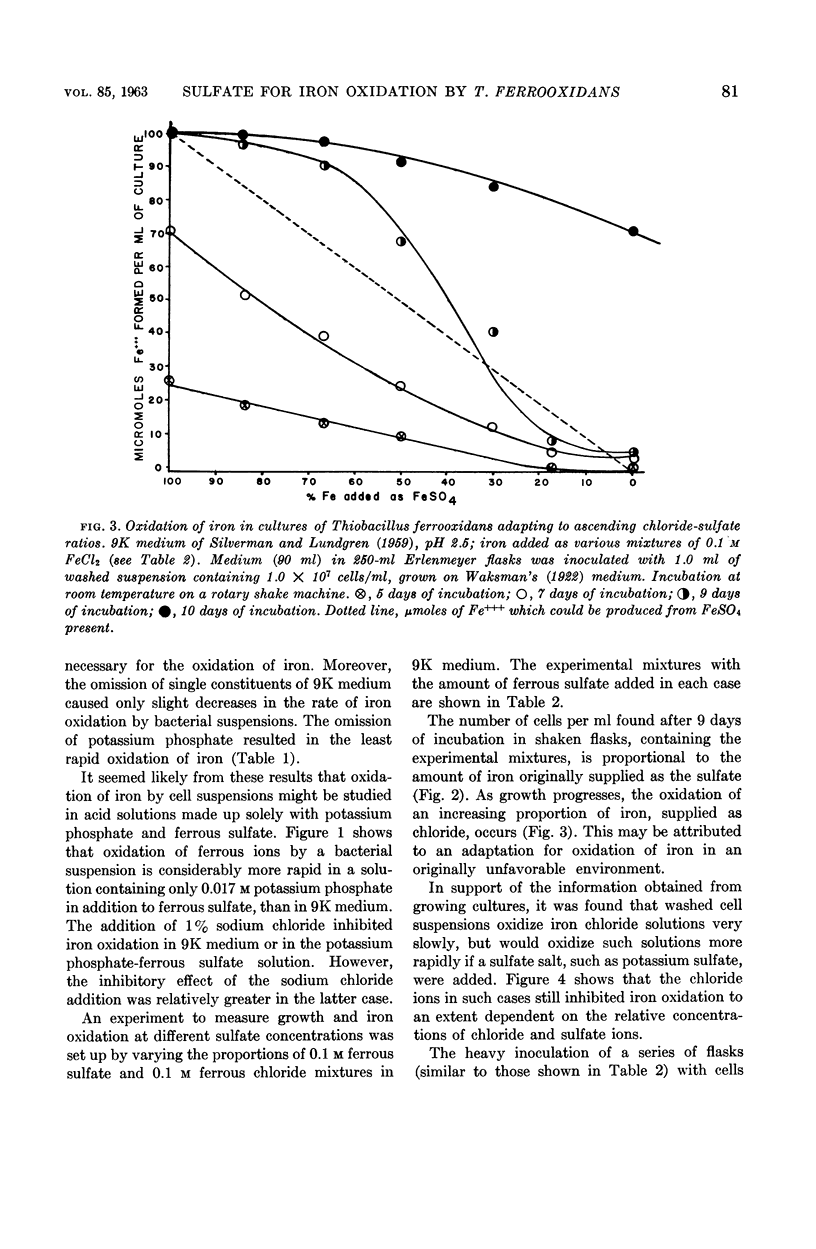
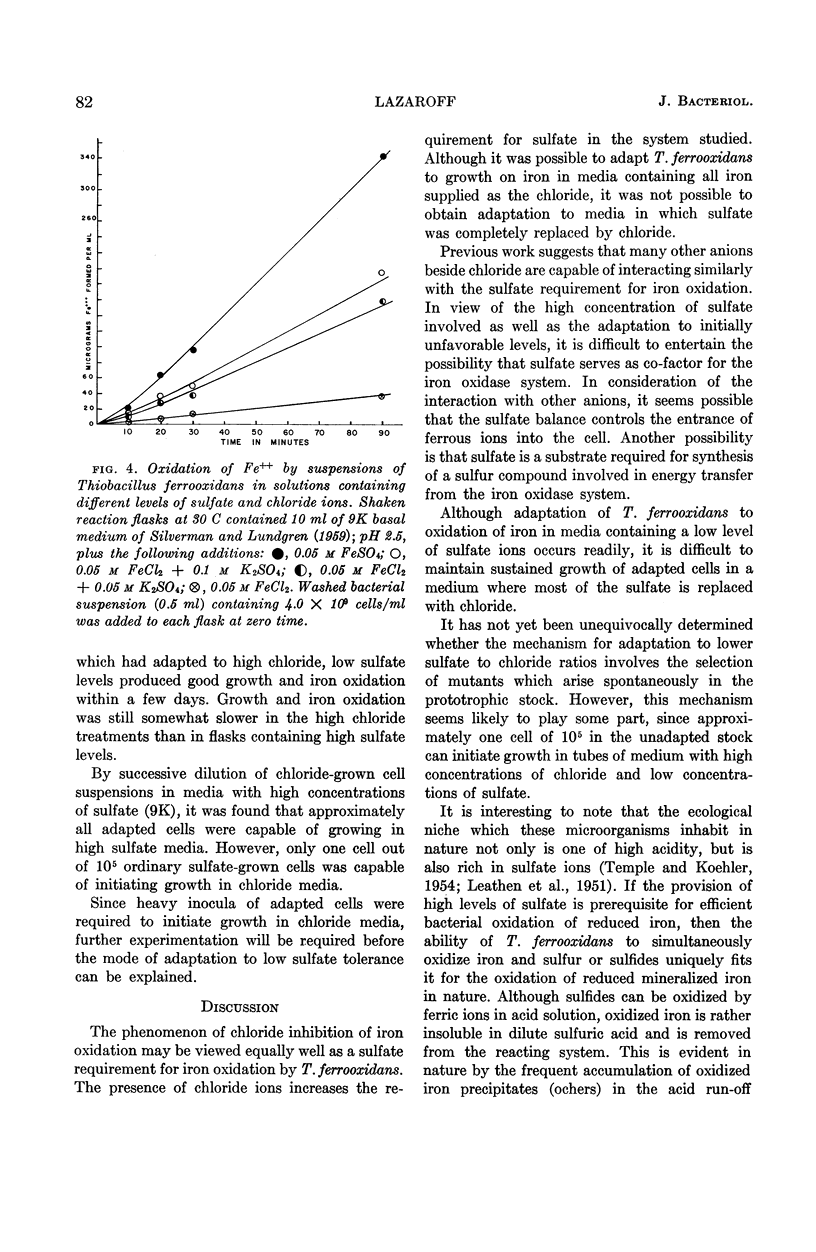
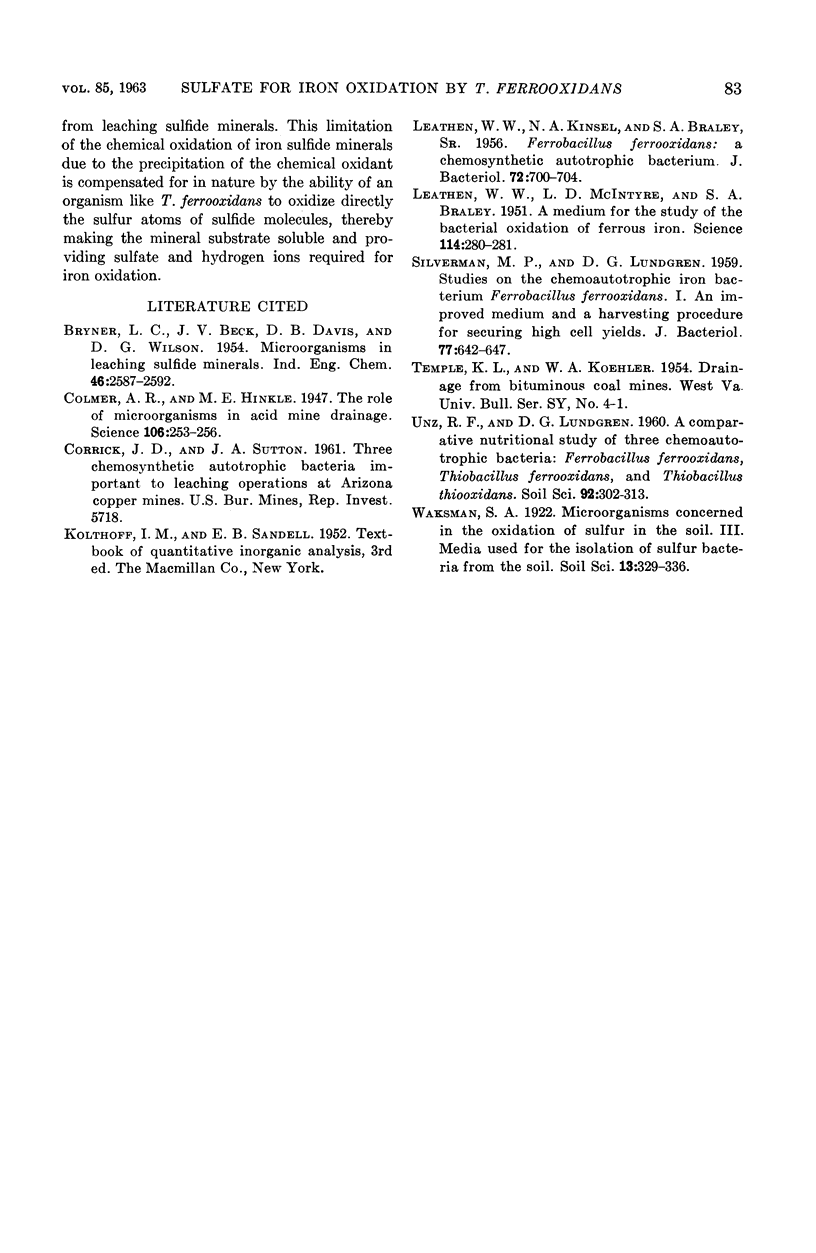
Selected References
These references are in PubMed. This may not be the complete list of references from this article.
- BRALEY S. A., Sr, KINSEL N. A., LEATHEN W. W. Ferrobacillus ferrooxidans: a chemosynthetic autotrophic Bacterium. J Bacteriol. 1956 Nov;72(5):700–704. doi: 10.1128/jb.72.5.700-704.1956. [DOI] [PMC free article] [PubMed] [Google Scholar]
- Colmer A. R., Hinkle M. E. The Role of Microorganisms in Acid Mine Drainage: A Preliminary Report. Science. 1947 Sep 19;106(2751):253–256. doi: 10.1126/science.106.2751.253. [DOI] [PubMed] [Google Scholar]
- LEATHEN W. W., McINTYRE L. D., BRALEY S. A., Sr A medium for the study of the bacterial oxidation of ferrous iron. Science. 1951 Sep 14;114(2959):280–281. doi: 10.1126/science.114.2959.280. [DOI] [PubMed] [Google Scholar]
- SILVERMAN M. P., LUNDGREN D. G. Studies on the chemoautotrophic iron bacterium Ferrobacillus ferrooxidans. I. An improved medium and a harvesting procedure for securing high cell yields. J Bacteriol. 1959 May;77(5):642–647. doi: 10.1128/jb.77.5.642-647.1959. [DOI] [PMC free article] [PubMed] [Google Scholar]


